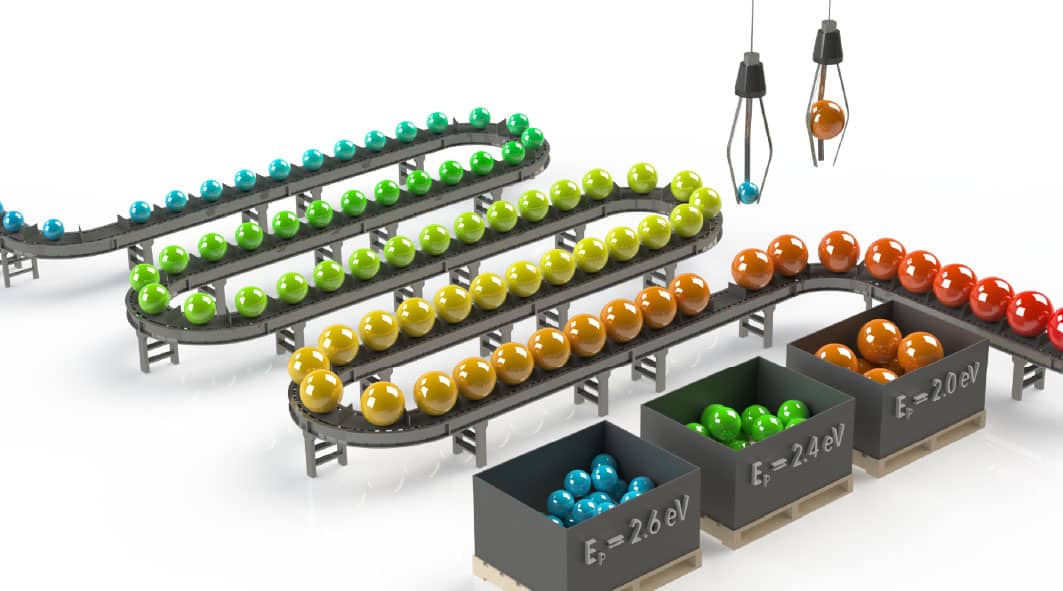From Jellybean to Licorice Whip: Tracing Development of the GI Tract
Researchers at North Carolina State University have found the method by which the “gut tube” – the primitive structure in all vertebrate embryos that eventually becomes the entire gastrointestinal tract – changes from a short, solid cylinder into an elongated hollow structure that loops and coils. Their research paves the way toward greater understanding of gastrointestinal development, and may eventually lead to early diagnosis and treatment of intestinal malformation, a common condition in human infants.
Dr. Nanette Nascone-Yoder, assistant professor of developmental biology, and a team of NC State researchers utilized developing frog embryos to study the earliest stages of gastrointestinal development. In frogs, the gut tube increases its length by a factor of three in one 24-hour period, and the elongated structure also narrows and coils during that time.
“The frog is an excellent model because the embryos are transparent, and you can observe the structural changes in real time,” Nascone-Yoder says.
The researchers specifically wanted to know how the gut tube got longer, since there was no evidence that cell proliferation, or division, was responsible for the changing structure. They discovered that Rho GTPase, a molecule important to gastrulation – the process whereby an embryo rearranges cells to form layers that will eventually become the different tissues of the body – was responsible for telling the gut tube to get longer and thinner.
Under the influence of Rho GTPase and associated molecules, the cells inside the gut tube change their shape and position, orienting like spokes on a wagon wheel. Then the interior cells push between the cells on the outside, forcing the tube to become both long and hollow.
“We’ve known for a long time that this particular molecule is important to cell migration and adhesivity, or stickiness,” Nascone-Yoder says. “It’s important at the earliest stages of embryonic development, because it tells cells where and how to line up so that other developmental processes can begin. Now we see that the same thing is happening here, with an organ.”
Nascone-Yoder hopes that this work will lead to a greater understanding of gastrointestinal development in both animals and humans.
“Approximately one in 500 human infants is born with intestinal malrotation—it’s a very common condition, and we’re very good at fixing problems after the fact, but no one has really paid a lot of attention to how the gastrointestinal tract forms to begin with,” Nascone-Yoder says. “That’s what we wanted to look at in this study. If we can determine exactly what needs to happen for a gastrointestinal tract to form properly, then we may be better able to discover the factors that lead to malformation.”
The study was funded by the National Science Foundation and published in Developmental Dynamics. Nascone-Yoder is an assistant professor of developmental biology in the Department of Molecular Biomedical Sciences at NC State’s College of Veterinary Medicine.
-peake-
Note to editors: Abstract of the paper appears below.
“Morphogenesis of the primitive gut tube is generated by Rho/ROCK/myosin II-mediated endoderm rearrangements”
Authors: Nanette Nascone-Yoder, NC State University, et al.
Published: November 2009 in Developmental Dynamics
Abstract: During digestive organogenesis, the primitive gut tube (PGT) undergoes dramatic elongation and forms a lumen lined by a single-layer of epithelium. In Xenopus, endoderm cells in the core of the PGT rearrange during gut elongation, but the morphogenetic mechanisms controlling their reorganization are undetermined. Here, we define the dynamic changes in endoderm cell shape, polarity, and tissue architecture that underlie Xenopus gut morphogenesis. Gut endoderm cells intercalate radially, between their anterior and posterior neighbors, transforming the nearly solid endoderm core into a single layer of epithelium while concomitantly eliciting radially convergent extension within the gut walls. Inhibition of Rho/ROCK/Myosin II activity prevents endoderm rearrangements and consequently perturbs both gut elongation and digestive epithelial morphogenesis. Our results suggest that the cellular and molecular events driving tissue elongation in the PGT are mechanistically analogous to those that function during gastrulation, but occur within a novel cylindrical geometry to generate an epithelial-lined tube.
- Categories:


